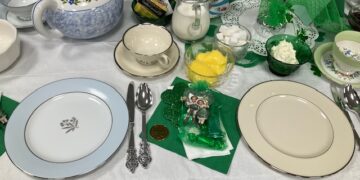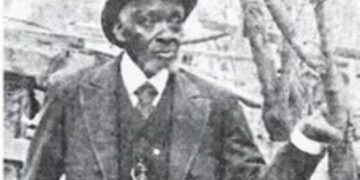Summer is here and baseball is in full swing (pardon the pun). We enjoyed a Broadway Bruins game recently and hopefully can make it to a few more before the season ends. I have never played baseball but many years ago I played county league softball at Linville on the Rebels softball team. I had a pretty good glove in the outfield, but my hitting left much to be desired.
The beginning of my softball “career” was in a cow pasture behind our house in Bergton. We would chase the cows off the field, gather up the neighborhood kids and have a ballgame. Our next-door neighbor had 17 kids so 4 or 5 of them were close enough in age to join in. If anyone reading this has ever played cow pasture softball, you know it presents some challenges.
First, we needed to prepare the playing field. It was important to locate the least cow tracked and cow pie covered area to layout the infield. The shape of the infield “diamond” ended-up to be more of an irregular quadrilateral (I had to look that one up). Likely the reason it sometimes seemed to take an awful long time to get to first base. The bases consisted of whatever was available at the time. Usually, a piece of plywood or a board, but nothing that would harm the cattle, and it had to be removed when play was completed. If the weather was dry old cow pies worked well. But with all of them being of similar appearance, you had to remember which ones were designated as bases on account of calling foul balls and outs. Funny how they tended to change position depending on if you were batting or fielding the ball. Since there were no umpires, many arguments ensued.
Rules of play varied with the number of players. You could play ball with 4 kids but that meant that hits to right field were either called foul balls or outs. It was for the best since right field sloped up at very a steep angle. On defense you had a pitcher that covered the infield and a “roaming” outfielder. On offense, if a catcher was available the batter always waited for that perfect pitch. This caused many arguments about delay of game. However, if the first batter got a hit, the second batter had no catcher and would be forced to swing at anything to keep from retrieving the ball, which could roll for quite a distance since there was no backstop. Another common problem was plays at home plate. Sometimes there was no catcher at all and when there was, more arguments took place about how much effort was made to tag a teammate out.
To play softball you need the proper equipment. There were never enough gloves to go around but we would switch out what we had between innings. Catching a ball bare handed wasn’t pleasant but you soon learned the proper technique. You can make do with a lot of things but you do have to have a ball. Nobody had much money, so the ball was usually of poor quality. A couple of solid hits and it would go lopsided. It was a good day if the cover stayed on for a complete game. A quick repair job with duct tape was common but short lived. By then you could reshape the ball by hand, but the spongy ball would barely go out of the infield. Whoever said “what doesn’t kill you makes you strong” has never tried to field a hard-hit, lopsided softball on a rocky, cow tracked infield. Likely the main reason I never could field a ground ball.
Then there is the bat. You can hit a ball with almost anything. And we usually did. Our collection consisted of maybe one serviceable wooden bat and a couple of other split bats that had been used to bat rocks or beat something senseless. You can do a lot with nails and duct tape to repair a split bat, but they are never quite the same. There is nothing like taking a big swing and getting a splinter or cutting your hand on a bent over nail. Whittling a bat out of a 2×4 seemed like a good idea but they were heavy, never did balance right and you still had to deal with the splinter factor. And sometimes the vibration from a solid hit would rattle your teeth.
Choosing sides was another important aspect of the game. Uneven teams could mean a long afternoon of chasing balls around in the outfield and little time at bat. Two team captains were chosen, and a bat was thrown into the air and caught with one hand. The last person able to hold on to the bat (usually with two fingers) would choose first. The strategic shuffling of hands and fingers often resulted in the first argument of the day.
A lot of life lessons were learned on that playing field. Lessons in fair play, teamwork, compromise and settling the many disagreements (not quietly, but for the most part peacefully). Games ended when there was an injury, lunch or dinner was ready, the guy with the ball got mad and went home, or the ball landed in a fresh cow pie and nobody would clean it off.
I drove by the old playing field a few weeks ago. Things have changed but the memories still linger.
R.D. Cullers
Graduate of Bergton Elementary (Class of ’65)
































